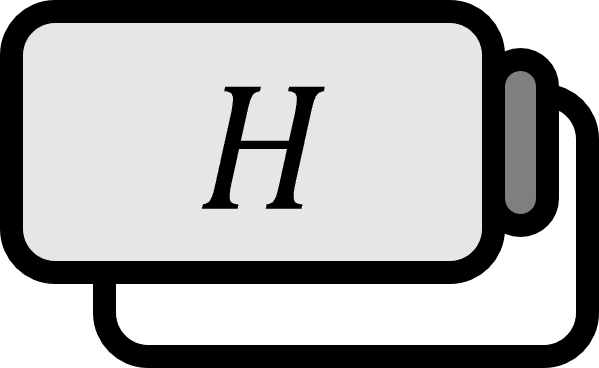Inner Product is a Continuous Mapping
Theorem1
Let’s assume $\left( X, \left\langle \cdot,\cdot \right\rangle \right)$ is an inner product space and $\left\{ \mathbf{x}_{n} \right\}$, $\left\{ \mathbf{y}_{n} \right\}$ are sequences in $X$ converging to $\mathbf{x}$ and $\mathbf{y}$, respectively. Then, the following holds.
$$ \left\langle \mathbf{x}_{n},\mathbf{y}_{n} \right\rangle \to \left\langle \mathbf{x},\mathbf{y} \right\rangle \text{ as } n \to \infty $$
Since the limit can move inside and outside of the inner product, we obtain the following corollary.
Corollary
Assuming that $H$ is a Hilbert space, $\left\{ \mathbf{x}_{k} \right\}_{k\in \N}$ is a sequence in $H$, and $\left\{ c_{k} \right\}_{k\in\mathbb{N}} \in \ell^{2} (\mathbb{N})$ with $\sum \limits_{k=1}^{\infty}c_{k}\mathbf{x}_{k}$ converging, then the following equation holds.
$$ \begin{align*} \left\langle \mathbf{x},\sum \limits_{k=1}^{\infty}c_{k}\mathbf{x}_{k} \right\rangle =&\ \sum \limits_{k=1}^{\infty}\overline{c_{k}}\left\langle \mathbf{x}, \mathbf{x}_{k} \right\rangle \\ \left\langle \sum \limits_{k=1}^{\infty}c_{k}\mathbf{x}_{k}, \mathbf{x} \right\rangle =&\ \sum \limits_{k=1}^{\infty}c_{k}\left\langle \mathbf{x}_{k}, \mathbf{x} \right\rangle \end{align*} $$
Explanation
$$ \lim \limits_{n\to \infty} \left\langle \mathbf{x}_{n}, \mathbf{y}_{n} \right\rangle = \left\langle \lim \limits_{n\to \infty} \mathbf{x}_{n}, \lim \limits_{n\to \infty} \mathbf{y}_{n} \right\rangle = \left\langle \mathbf{x},\mathbf{y} \right\rangle $$
This implies that the inner product is a continuous mapping, according to the equivalence condition of continuity. It is needless to say that this is a very useful property.
Proof
It can be easily shown through the definition of inner product and the Cauchy-Schwarz inequality.
$$ \begin{align*} \left| \left\langle \mathbf{x}_{n},\mathbf{y}_{n} \right\rangle -\left\langle \mathbf{x},\mathbf{y} \right\rangle \right| =&\ \left| \left\langle \mathbf{x}_{n},\mathbf{y}_{n} \right\rangle -\left\langle \mathbf{x},\mathbf{y}_{n} \right\rangle + \left\langle ,\mathbf{y}_{n} \right\rangle -\left\langle \mathbf{x},\mathbf{y} \right\rangle \right| \\ \le& \left| \left\langle \mathbf{x}_{n},\mathbf{y}_{n} \right\rangle -\left\langle \mathbf{x},\mathbf{y}_{n} \right\rangle \right| +\left| \left\langle \mathbf{x},\mathbf{y}_{n} \right\rangle -\left\langle \mathbf{x},\mathbf{y} \right\rangle \right| \\ =&\ \left| \left\langle \mathbf{x}_{n}-\mathbf{x},\mathbf{y}_{n} \right\rangle \right| +\left| \left\langle \mathbf{x},\mathbf{y}_{n}-\mathbf{y}\right\rangle \right| \end{align*} $$
Applying the Cauchy-Schwarz inequality to the right-hand side gives the following.
$$ \left| \left\langle \mathbf{x}_{n},\mathbf{y}_{n} \right\rangle -\left\langle \mathbf{x},\mathbf{y} \right\rangle \right| \le \left\| \mathbf{x}_{n}-\mathbf{x} \right\| \left\| \mathbf{y}_{n} \right\| + \left\| \mathbf{x} \right\| \left\| \mathbf{y}_{n}-\mathbf{y} \right\| $$
Since the norm is a continuous mapping, $\lim \limits_{n\to \infty} \left\| \mathbf{x}_{n}-\mathbf{x} \right\| =0$ and the same applies to $\mathbf{y}_{n}$. Therefore, taking the limits on both sides of the equation gives
$$ \begin{align*} && \lim \limits_{n\to \infty} \left| \left\langle \mathbf{x}_{n},\mathbf{y}_{n} \right\rangle -\left\langle \mathbf{x},\mathbf{y} \right\rangle \right| \le& 0 \\ \implies && \lim \limits_{n\to \infty} \left\langle \mathbf{x}_{n}, \mathbf{y}_{n} \right\rangle =&\ \left\langle \mathbf{x},\mathbf{y} \right\rangle \end{align*} $$
■
Gerald B. Folland, Real Analysis: Modern Techniques and Their Applications (2nd Edition, 1999), p173 ↩︎
